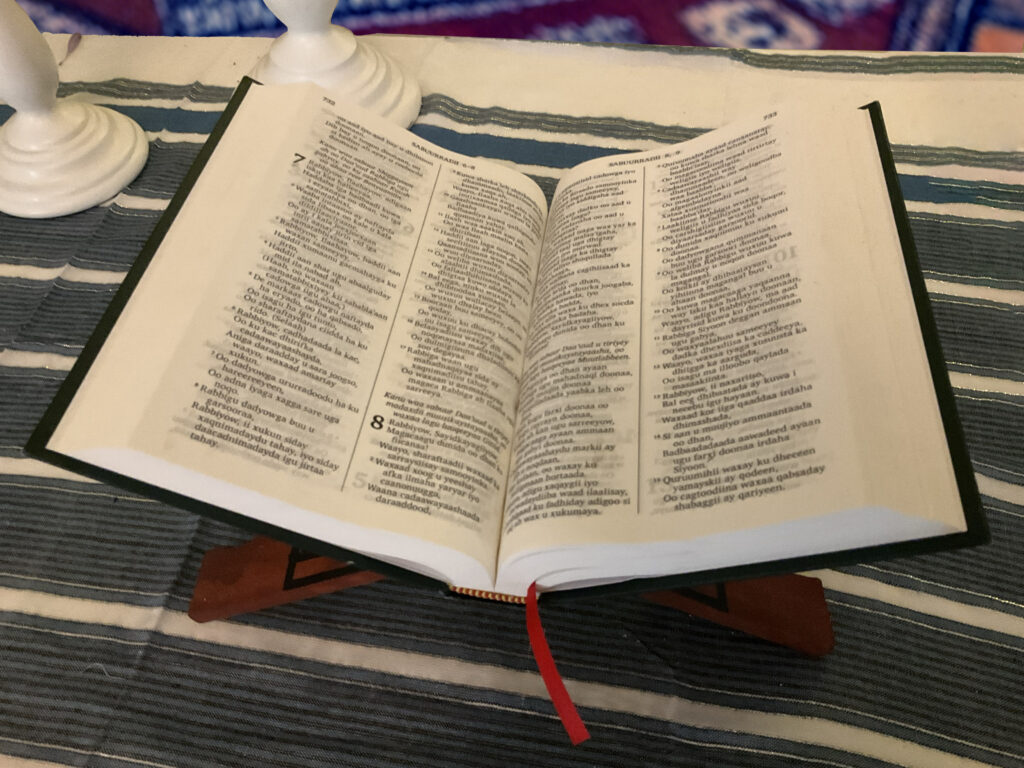The unchanging message of the Bible
Introduction
In conversations between people of different faiths, some say the Bible has been changed over time. This article explains why many believe the Bible has been carefully preserved. We will look at its history, the accuracy of old copies, and the way its message stays the same. These help us understand why the Bible’s message has not been changed.
1. The Bible’s History and Preservation
The Bible has been passed down through history with great care. Ancient handwritten copies, historical records, and archaeology all show that the Bible has stayed the same in important ways.
a. Old Testament Manuscripts
-
The Dead Sea Scrolls: Found between 1947 and 1956, these scrolls are over 2,000 years old. One of them is the book of Isaiah, and it matches very closely with later copies. This shows how well the Old Testament was preserved.
-
The Aleppo Codex: This is a very respected Hebrew Bible from the 10th century. It shows that people took great care to keep the Old Testament accurate over time.
b. New Testament Manuscripts
The New Testament has thousands of early copies, especially in Greek. These help us know what the original writings said.
Some important examples:
-
Codex Sinaiticus: A complete Bible from the 4th century CE. You can see it in the British Library in London.
-
Codex Vaticanus: Another complete copy from the 4th century CE, kept in the Vatican.
-
Codex Alexandrinus: A 5th-century manuscript with almost the whole Bible. You can see it in the British Library in London.
There are over 5,800 Greek manuscripts. These, along with early translations and writings from church leaders, help show that the New Testament has been well preserved.
2. Accuracy of the Bible Copies
Even though some small differences exist between copies, the message of the Bible has stayed the same.
a. What is Textual Criticism?
Textual criticism is when experts compare different Bible manuscripts to find the original wording. Even though there are some small changes (like spelling or word order), they do not change the Bible’s main teachings. This careful study helps ensure that today’s Bible is trustworthy.
b. Early Translations
The Bible was translated into many languages early on. These translations support the idea that the message has not changed.
Some examples:
-
The Septuagint: A Greek translation from the 3rd century BCE.
-
The Vulgate: A Latin version made by Jerome in the 4th century CE.
-
The Peshitta: A Syriac translation from the 2nd century CE.
These translations match well with the Hebrew and Greek originals. They help confirm the Bible’s accuracy.
3. The Bible’s Consistent Message
One of the most powerful signs that the Bible has not been changed is its message. It was written by many people over thousands of years, yet it tells one clear story.
a. Prophecies and Fulfilment
The Bible has many prophecies that came true—especially about Jesus Christ’s birth, life, death, and resurrection. These fulfilled prophecies show that the Bible’s message comes from God and has been carefully preserved.
b. Agreement in Teachings
The Bible’s authors lived in different times and places. Still, their teachings about God, people, salvation, and how to live are consistent. This harmony shows that the Bible’s message is stable and inspired by God.
Conclusion
When we look at the Bible’s history, the accuracy of its copies, and its message, we see strong evidence that it has not been changed in important ways. Ancient manuscripts, historical and archaeological evidence, and the Bible’s consistent message all support this.
As Christians, we can be confident that the Bible we read today faithfully shares God’s truth.
Note:
When talking about religion with people from other faiths, it’s important to be kind and respectful. This article is meant to help promote understanding and friendly conversation.
(Please note: Numbers and discoveries may change as scholars continue to study and find new manuscripts.)

